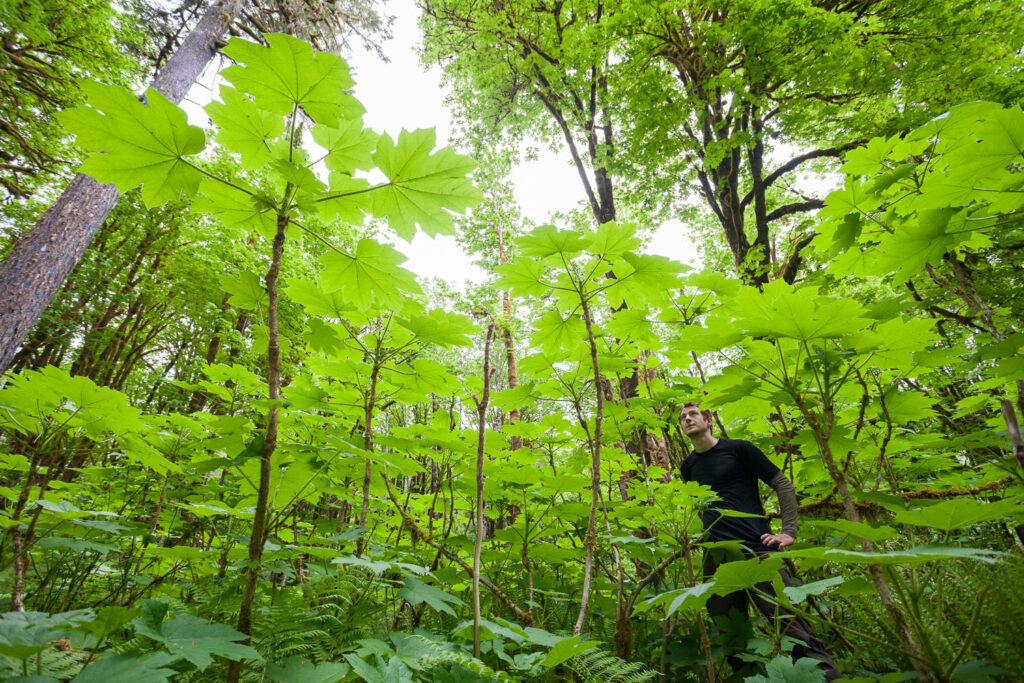What’s in a name? – Well, in this case, the horridus says it all. This plant is native to British Columbia and is found in wet, forested, damp areas. It grows up to 3 metres in height and is recognized by its palmate leaf. Beware of this plant; every part except the root is covered in poisonous and irritating spines. These can be up to two centimetres long and embed easily in human skin, even when the plant is lightly brushed. The rash Devil’s Club causes is similar to poison ivy, causing suppurating blisters on the skin. WorkSafe BC warns that longer spines have been known to cause permanent damage when the spines come into contact with the eyes. The First Peoples of the coast value Devil’s Club; The Tlingit, Tsimshian, and Haida people burn the stalks and use the charcoal for ceremonial face paint. When the bark is stripped from the stem, the stems can be used to make poultices for wounds and ease arthritis and joint pain. The poultices can also be used to treat the reaction caused by the spines of Devils Club.

Phone by TJ Watt via Ancient Forest Alliance
Leave a Reply
You must be logged in to post a comment.